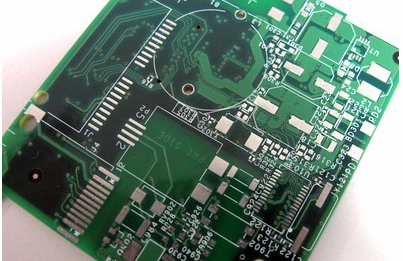At present, the industry's testing methods for PCBA assembled circuit boards can be roughly divided into three major parts: AOI, ICT/MDA, and FVT/FCT. In addition, some people use X-Ray to check on the line, but it is not common, so it is not included in this article. discuss. Some netizens asked about the difference between ATE (Auto Test Equipment) and ICT/MDA. I will explain a little at the end of the article. However, this is just a personal opinion and may be fallacy. Please provide your opinions.
Below we will discuss the capabilities of these three test methods in general, and because the current three methods have their own advantages and disadvantages, it is difficult to replace the other two with only one method, unless someone thinks that the risk is small and can be ignored.
AOI (Automated-Optical-Inspection):
With the advancement and maturity of imaging technology, AOI is gradually adopted by many SMT production lines. Its inspection method is to use image comparison, so there must be a golden sample that is considered good and record its image., And then the other boards are compared with the images of the standard model to judge whether they are good or bad.

Therefore, AOI can basically determine whether there are missing parts, tombstones, wrong parts, offset, bridges, empty soldering, etc. on the PCBA assembly circuit board; but it cannot identify the soldering properties directly under the parts, such as BGA IC or QFN. IC, as for fake welding and cold welding, it is difficult to judge by AOI. In addition, if the characteristics of the parts have changed or there are micro cracks, it is difficult to be identified by AOI.
Generally, the misjudgment rate of AOI is very high, and it takes an experienced engineer to debug the machine for a period of time before it becomes stable. Therefore, during the initial introduction of the new board, a lot of manpower input is required to re-judge whether the problematic board laid down by AOI is really problematic.
ICT/MDA (In-Circuit-Test/Manufacturing-Defect-Analyzer):
Traditional testing methods. The electrical characteristics of all passive components can be tested through test points. Some advanced test machines can even run the program on the circuit board to be tested and do some functional tests that can be run by the program. If most of the functions can be completed through the program, you can consider canceling the subsequent FVT (functional test).
It can catch missing parts, tombstones, wrong parts, bridges, reverse polarity, and can roughly measure the weldability of active parts (IC, BGA, QFN), but it is not suitable for empty welding, false welding, and cold welding. Certainly, because this kind of solderability problem is intermittent, if it happens to be touched during the test, it will pass.
Its disadvantage is that there must be enough space on the circuit board to place the test points. If the fixture is not designed properly, the electronic parts on the circuit board and even the traces in the circuit board will be damaged due to mechanical actions.
The more advanced the test fixture, the more expensive it is, some even as high as NT$1 million.
FVT/FCT (Function Verification Test):
Traditional PCB functional testing (FCT/FVT) methods are usually combined with ICT or MDA. The reason for the need to match ICT or MDA is that the functional test needs to actually be electrically connected to the circuit board. If there are short circuits on some power supplies, the board under test is prone to damage. In severe cases, the PCB circuit board may even be burned. Work safety concerns.
The functional test also cannot know whether the characteristics of the electronic parts meet the original requirements, that is to say, the performance of the product cannot be measured; in addition, some by pass circuits cannot be measured by the general function test, which needs to be considered.
The PCB function test should be able to catch all the parts' solderability, faulty parts, bridges, short circuits, etc., except for the By pass circuit, and the problems of empty, false, and cold welding may not be completely detected.
The difference between ATE (Auto Test Equipment) and ICT/MDA
Generally, as long as the testing machine is connected with a loading/unloading device so that the system can automatically test and judge the good or bad products of the board, it can be called ATE, because ATE is the abbreviation of Auto Test Equipment. . Therefore, ATE does not generally refer to ICT. Sometimes a simple test is the automatic assembly line on the machine frame can also be called ATE.
ICT generally refers to all machines that can support needle-bed electrical testing. Please refer to the previous section. Strictly speaking, ICT refers to relatively high-end needle-bed electrical testing machines. In addition to running some low-level programs for functional testing, It can also test all integrated circuit (IC) parts, in addition, it can also cover all the functions that MDA can detect. MDA is a lower-level electrical test machine, and generally only can test Open/Short and simple passive PCB component measurement.
It’s just that, on the other hand, the above terms sometimes seem to be difficult to distinguish their true functions directly with the meaning of the word. In the end, they should only become common terms by everyone, and the boundaries seem to be getting blurred., Should a machine like TR5000 say it is ICT or MDA? In fact, its function lies between the two, and its performance and price are also between the two. It is a matter of choosing how to use it.